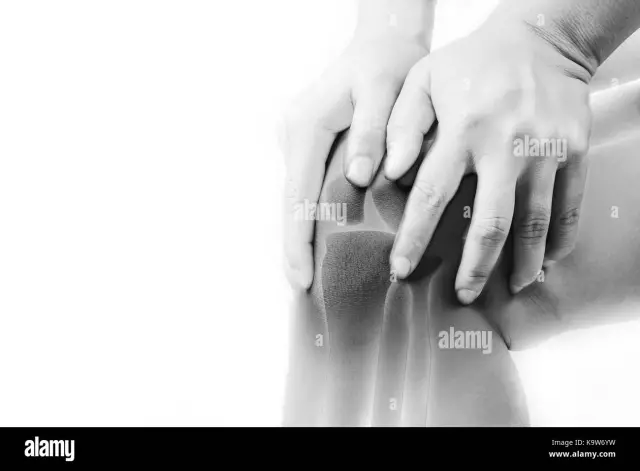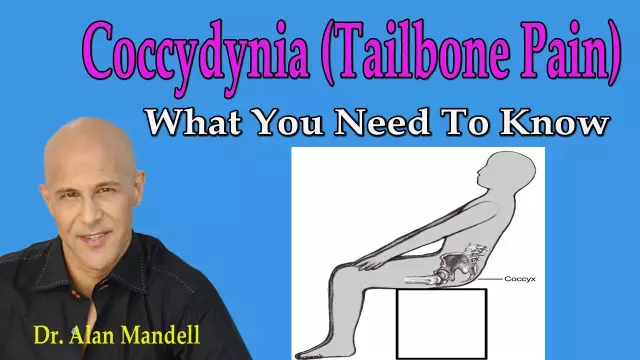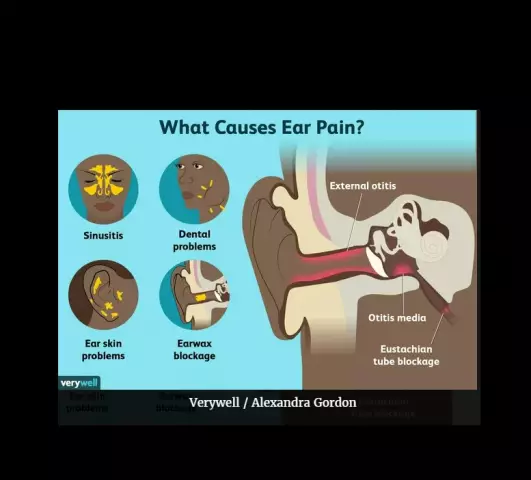- Author Rachel Wainwright [email protected].
- Public 2023-12-15 07:39.
- Last modified 2025-11-02 20:14.
Knee Pain: What to Do?

The knee is the largest and most functionally complex joint in the human body, which is subjected to great stress on a daily basis. It is surrounded by developed leg muscles that provide mobility and strength of movement, but at the same time subject it to strong stress.
Despite its large size, the knee joint is a rather weak and vulnerable spot that is easily injured. Therefore, many people periodically hurt their knees when bending, prolonged or short-term, but strong loads. Especially often, such problems arise in old age.
Causes of knee pain
Pain in the knee joint can be caused by trauma or have a pathological nature. Sometimes this is a symptom of a serious illness, which can be determined by the nature of the sensations and a number of additional signs. Among the most common reasons why knees hurt are the following:
- Ligament Injury - Any physical activity can lead to knee injury. Often this happens during sports and during outdoor activities, while an immediate sharp pain is felt, the joint swells. If this happens, it is necessary to exclude further stress on the injured leg until medical attention is provided so as not to aggravate the injury;
- Inflammation of the tendons (tendonitis) is another injury that can occur while playing sports. Tendonitis is accompanied by pain in the kneecap itself and in the front of the knee, but not continuously, but during running, jumping, squatting and climbing stairs;
- Damage to the meniscus (cartilage in the knee joint) is a fairly common injury that causes pain in the back of the knee. The gap can occur gradually so that the person does not immediately notice the problem;
- Bursitis is an inflammation of the fluid sac in the knee joint, accompanied by swelling, swelling, and redness of the affected area, as well as knee pain when squatting. May be infectious;
- An articular mouse is a condition in which a piece of cartilage or bone is detached for any reason and gets caught between moving parts. In this case, patients complain of pain and attacks of knee blockade;
- Patella displacement - with this injury, the triangular bone in the front of the knee slides towards the outside of the knee. This is due to weakness and stiffness of the quadriceps femoris and extensor muscles of the legs, accompanied by severe knee pain and joint swelling. Abnormal bone position can usually be detected by visual inspection;
- Arthrosis - age-related wear of cartilage, develops gradually and is manifested by pain and swelling of the knee when walking;
- Arthritis is an inflammatory process that causes pain, stiffness, swelling and redness in the knee joint, and the discomfort usually increases at night. Arthritis often affects both knees at the same time.
What to do when your knees hurt
First of all, you need to find out why your knees hurt. If flexion, extension and other loads are accompanied by unbearable pain, treatment can only be prescribed by a specialist. With such symptoms, if acute injury is suspected, contact a traumatologist. If the reason is most likely pathological, you will need the help of a rheumatologist or orthopedist. A physical therapist, chiropractor or massage therapist can help relieve or relieve pain, but these are only temporary measures.
Diagnostics
There are many reasons for knee pain, so at the first unpleasant symptoms, you should consult a doctor. To make a more accurate diagnosis, the doctor will need to obtain detailed information about the nature of the sensations and their exact localization. If the discomfort is caused by an injury, describe how it was received. After the examination, the doctor will order an X-ray to rule out the possibility of a fracture.
If in this way it is not possible to identify the source of pain, magnetic resonance imaging (MRI) is prescribed, which allows you to assess the condition of the tendons and ligaments. In some cases, they resort to arthroscopy - the study of the structure of the knee joint using a microscopic video camera, which is surgically inserted into the knee joint.
Knee pain treatment
Whatever the cause of knee pain, the first thing to do is to reduce the stress on your joints. Often during the period of acute pain, the patient needs bed rest, followed by activation of the leg. It is recommended to use a cane or crutches when walking, wear soft and comfortable shoes. In some cases, the doctor will prescribe orthopedic insoles.
In some cases, the problem can be solved with conservative treatment, and sometimes surgery is used to treat knee pain.
Conservative treatment consists in relieving pain and relieving swelling in acute attacks, after which they restore joint mobility and its stability. Usually, non-steroidal anti-inflammatory and analgesic drugs are used; for very severe pain, they are prescribed to be injected directly into the joint. This allows you to relieve painful sensations for a long time and maintain knee mobility. Sometimes, if the knee hurts when bending, it is effective to use local remedies for applications that complement the action of non-steroidal anti-inflammatory drugs.

To restore the functions of the damaged parts of the knee, chondroprotectors are injected into the articular cavity - drugs that restore the mechanical integrity and elasticity of the cartilage, as well as artificial substitutes for synovial fluid. After that, physiotherapy procedures and special physiotherapy exercises are prescribed. As a result, this should help the patient to fully restore mobility and relieve knee pain. Such treatment acts on the lesion without causing side effects.
In more serious cases, surgery is necessary. Usually, drugs are first used to relieve swelling and partially restore joint mobility, after which an operation is performed. Sometimes the surgical method is the most effective or even the only treatment for traumatic knee injuries. In the course of such operations, some of its damaged components are replaced with artificial prostheses, and in some cases it is necessary to completely replace it.
The duration of recovery after the procedure depends on the degree of damage to the knee joint. But thanks to modern advances in surgery, patients almost always return to their usual way of life after rehabilitation, and knee pains remain in the past.
YouTube video related to the article:
Found a mistake in the text? Select it and press Ctrl + Enter.






